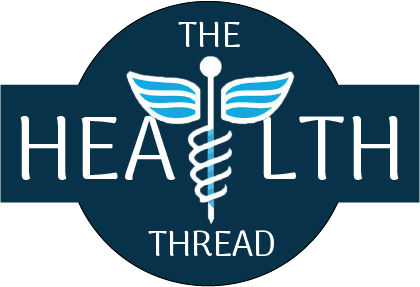
Written by Liza Nagarkoti , Public Health Researcher | Nutrition Specialist, BSc Nursing, MA(Nutrition), Project Officer (Health) LWF Nepal
Introduction
Nepal is facing a silent but dangerous shift in its public health landscape. While undernutrition remains a critical issue, a new epidemic is emerging: adolescent obesity. My recent research conducted among 72 students at a Kathmandu school revealed that 11.1% were obese and 9.7% overweight—a troubling trend that mirrors global patterns of worsening metabolic health among youth (Sitaula et al., 2023). This article explores the root causes of this crisis, its long-term consequences, and evidence-based solutions to safeguard Nepal’s next generation.
The Dietary Crisis: How Modern Eating Habits Are Harming Youth
One of the most alarming findings from my study was the dramatic shift in adolescent diets. 71.34% of students regularly consumed fast food, while a staggering 91.97% drank sugary beverages (Khatri et al., 2021). These foods, high in refined sugars and unhealthy fats, contribute directly to weight gain and metabolic disorders. Equally concerning was the prevalence of chocolate consumption—79.2% of students ate chocolates frequently, with 26.4% indulging four or more times per week.
The decline of traditional Nepali meals—rich in whole grains, lentils, and vegetables—has been replaced by processed snacks and calorie-dense foods. Equally problematic is meal skipping, reported by 13.9% of participants, with breakfast being the most frequently missed meal (31.97%). Research shows that skipping breakfast slows metabolism by 15-20% and leads to overeating later in the day (American Journal of Clinical Nutrition, 2019).
Why does this matter? Poor dietary habits in adolescence set the stage for lifelong health problems, including type 2 diabetes, heart disease, and fatty liver disease (WHO, 2020). Without intervention, Nepal risks a surge in preventable chronic illnesses.
The Sedentary Lifestyle Epidemic: Screens over Sports
Physical inactivity is another major driver of adolescent obesity. While 90.3% of students claimed to exercise, deeper analysis revealed that 51.4% engaged in less than 30 minutes of daily physical activity—far below the WHO’s recommended 60 minutes per day.
A key contributor to inactivity is excessive screen time. My study found that 52.8% of students spent at least one hour daily on phones, TVs, or computers, with 4.2% exceeding three hours. Research from Harvard University confirms that each additional hour of screen time correlates with a 2% increase in BMI (Harvard School of Public Health, 2021).
Even though 86.1% of students walked to school, this activity alone was insufficient to offset the sedentary behaviors dominating their free time. Only 15.3% participated in school sports, highlighting a critical gap in structured physical education programs.
The consequences? Inactive youth face higher risks of obesity, poor bone development, and mental health struggles like anxiety and depression (Journal of Adolescent Health, 2022).
Family and Socioeconomic Factors: Hidden Influences on Obesity
My research uncovered surprising links between family structure and obesity risk. Students from nuclear families (58.3%) had higher obesity rates than those from joint or extended families. This may be due to:
- Fewer shared household chores, reducing daily physical activity
- Greater reliance on convenience foods in busier, smaller households
- Less communal eating, which traditionally encourages balanced meals
Socioeconomic status also played a role. Wealthier students were 2.3 times more likely to be obese, likely due to:
- Higher pocket money expenditure on junk food (UNICEF Nepal, 2021)
- Increased access to smartphones and streaming services, promoting sedentary behavior
- Attending private schools, where canteens often sell more processed snacks
The Consequences: A Lifetime of Health Risks
Adolescent obesity is not just a cosmetic issue—it’s a ticking time bomb for Nepal’s healthcare system. Obese teens face:
Metabolic Disorders
Type 2 diabetes risk increases by 30% (WHO, 2020)
Higher blood pressure and cholesterol levels, leading to early heart disease
Psychological Harm
Lower self-esteem and higher rates of depression (Journal of Pediatrics, 2021)
Social stigmatization and bullying, affecting academic performance
Economic Burden
Lifetime healthcare costs for obese individuals are 42% higher (The Lancet, 2022)
Lost productivity due to obesity-related illnesses
Solutions: A Multi-Pronged Approach
- School-Based Interventions
- Replace junk food in canteens with affordable, nutritious options like fruits and nuts
- Mandate 30 minutes of daily physical activity (e.g., morning exercises or sports periods)
- Integrate nutrition education into science and health curricula
Example: Japan’s school lunch program, which provides balanced meals and nutrition lessons, has kept childhood obesity below 5% (UNICEF, 2023).
- Family and Community Actions
- Revive family meals with traditional, home-cooked dishes like dal-bhat-tarkari
- Limit screen time to under 2 hours/day and encourage outdoor play
- Community cooking workshops to teach quick, healthy recipes
- Policy Changes
- Tax sugary drinks and junk food, as Mexico did (reducing soda consumption by 12%)
- Improve urban walkability with sidewalks and safe parks
- Ban junk food ads targeting children, following Chile’s successful model
Conclusion: A Call to Action
Nepal stands at a crossroads. Without urgent action, adolescent obesity will escalate into a public health disaster. But the solutions are clear:
- Schools must lead with healthier meals and daily exercise
Parents can model better habits by reducing screen time and cooking nutritious meals
Policymakers should legislate changes, from junk food taxes to improved sports facilities
The time to act is now. By working together, we can ensure Nepal’s youth grow up healthy, active, and free from preventable diseases.
REFERENCES
- Sitaula, D., et al. (2023). Prevalence and associated factors of adolescent obesity among rural school adolescents in Nepal. Global Health, Epidemiology and Genomics.
- Khatri, E., et al. (2021). Risk factors for overweight among adolescents in peri-urban Nepal. PLOS ONE.
- WHO. (2020). Guidelines on physical activity for children and adolescents.
- UNICEF Nepal. (2021). Adolescent Nutrition and Lifestyle Survey.
- The Lancet. (2022). Global economic burden of obesity-related diseases.
